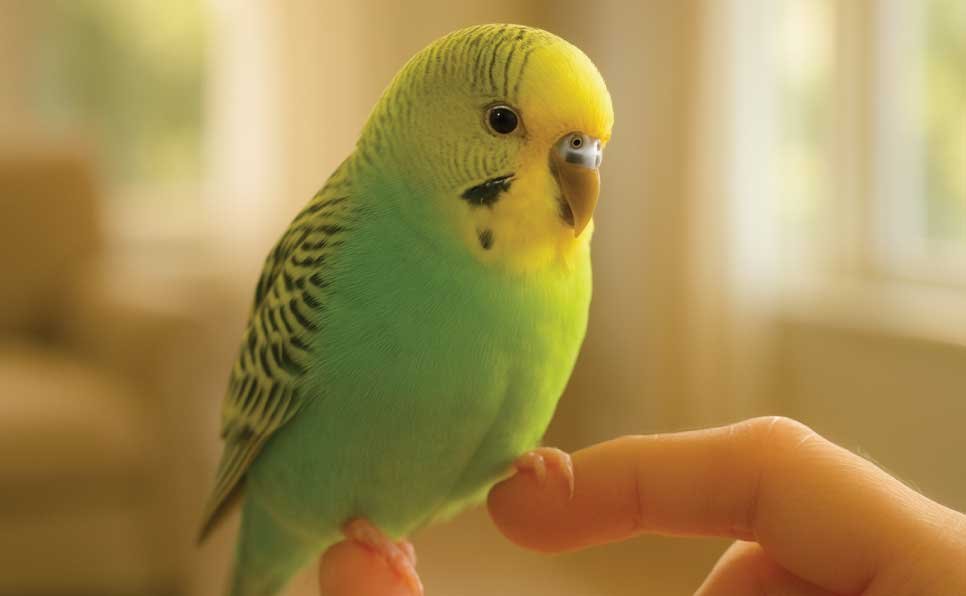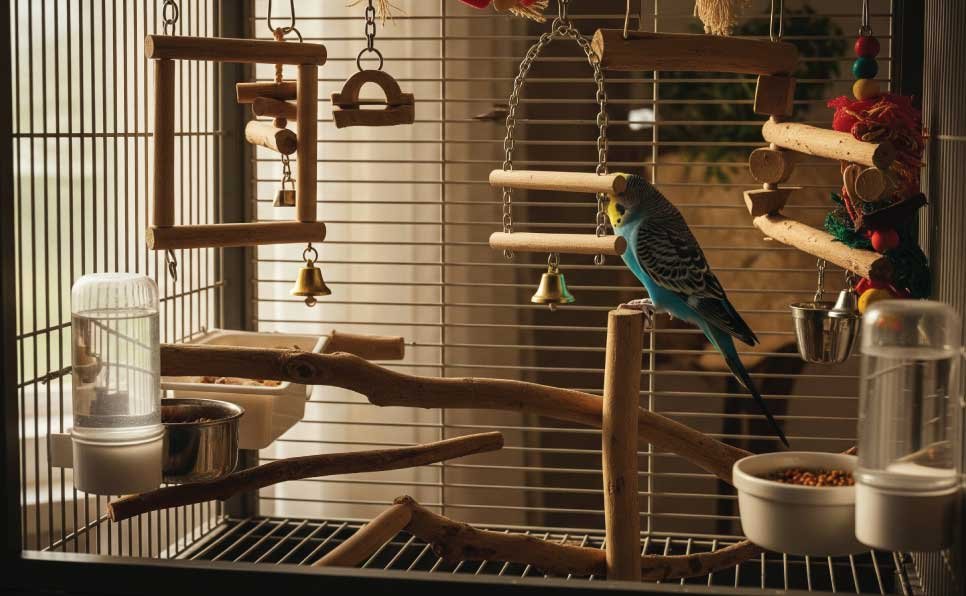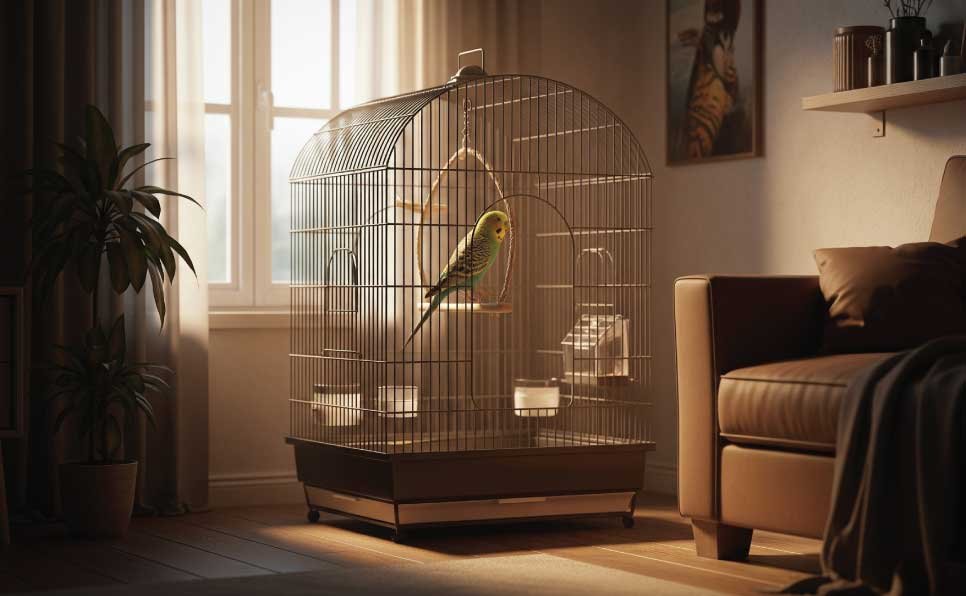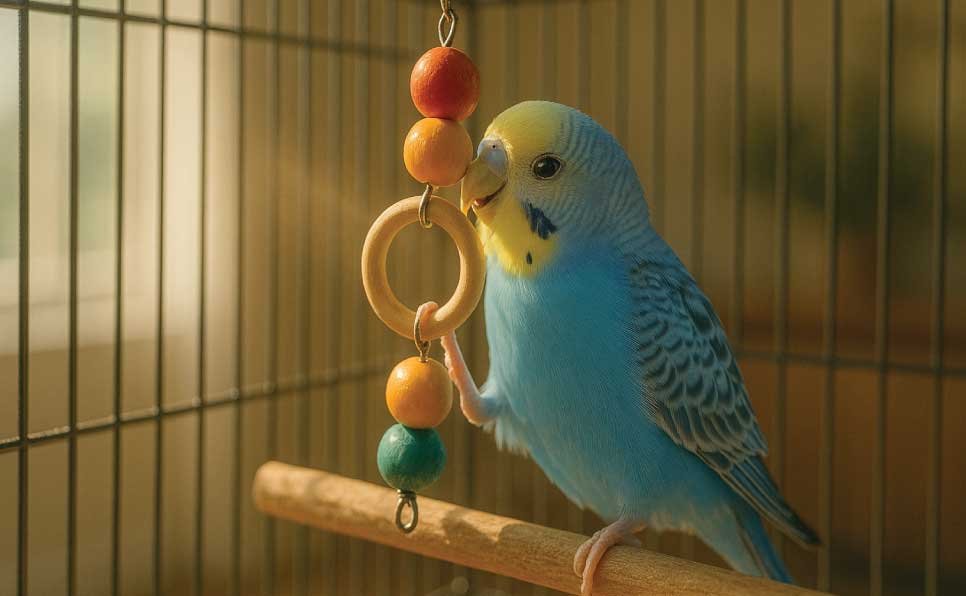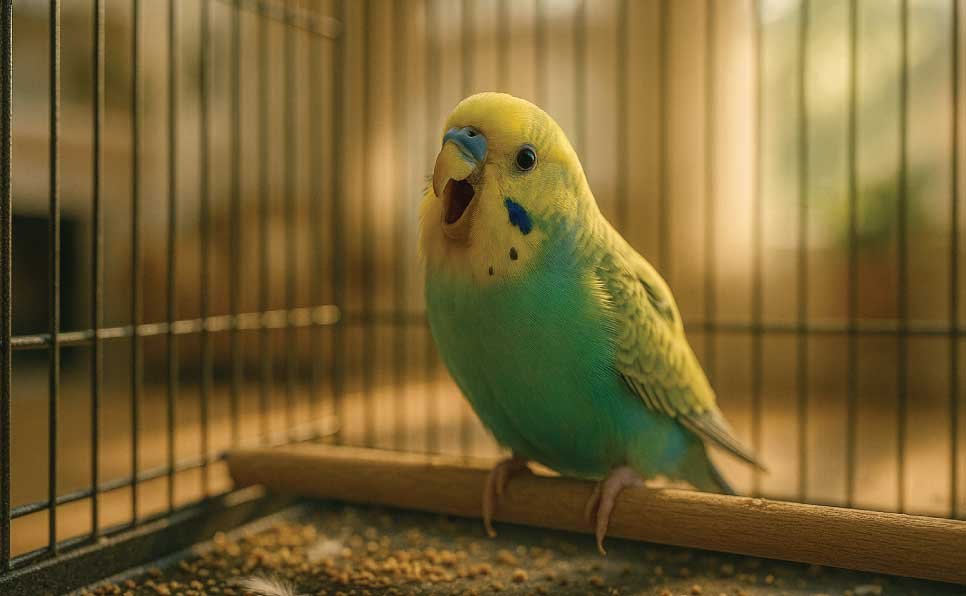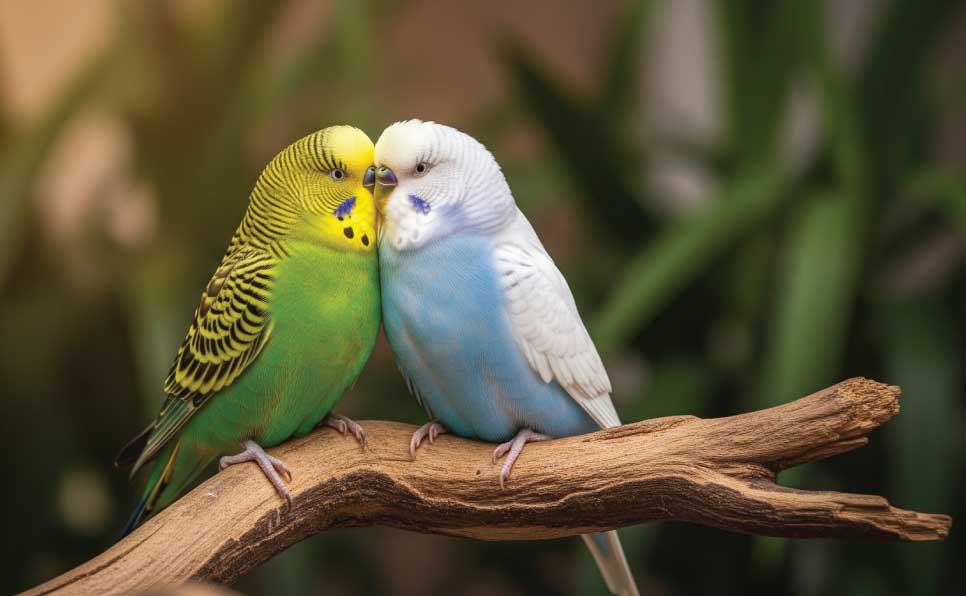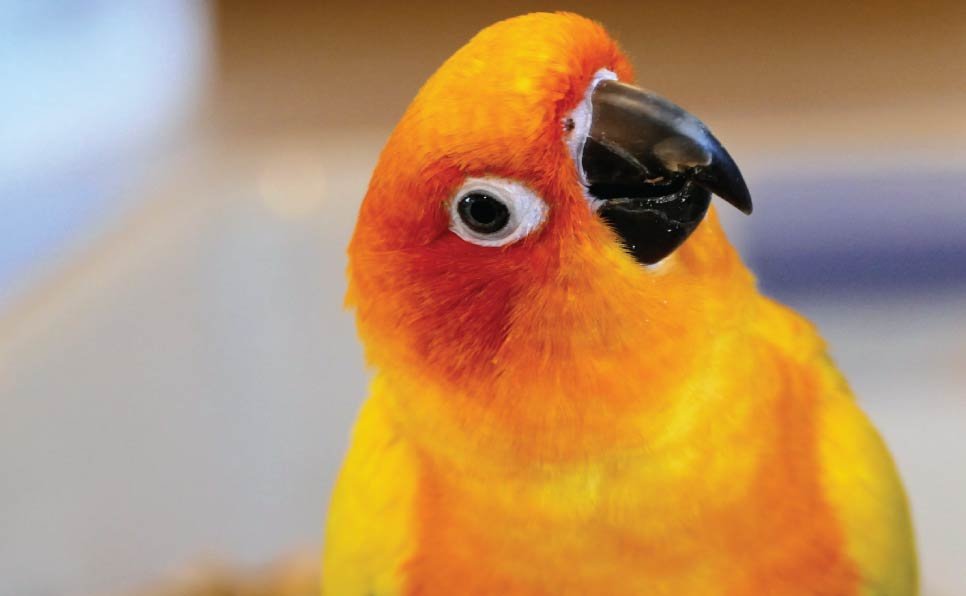The first time I walked into the animal rescue and saw Sunny, my heart did this little flip. There he was a tiny green-and-yellow parakeet huddled at the back of his cage, looking like he’d rather be anywhere else. His previous family couldn’t care for him anymore, and honestly, he looked as uncertain about this whole situation as I felt.
“Are you sure you’re ready for this?” I kept asking myself on the drive home, glancing at his travel carrier in the passenger seat. Would I mess this up? Could I really give him the life he deserved? That was three years ago, and I can tell you now – adopting Sunny was one of the best decisions I’ve ever made, but it definitely came with a learning curve I wasn’t expecting.
If you’re reading this, you’re probably where I was back then: curious about parakeets but unsure if they’re right for you. Maybe you’ve been charmed by their cheerful chatter at the pet store, or perhaps you’re considering adoption like I did. Either way, I want to give you the real story – not just the Instagram-worthy moments, but the 6 a.m. wake-up calls, the scattered seed husks, and yes, the incredible bond that makes it all worthwhile.
By the end of this guide, you’ll know:
- What daily life with a parakeet actually looks like (spoiler: it’s louder than you think)
- The honest challenges nobody warns you about
- Whether your lifestyle can handle a feathered roommate
- Real costs beyond the adoption fee
- Why rescued parakeets might just steal your heart
Listen to the Podcast: Is a Parakeet a Good Pet?
Why Parakeets Capture Hearts (Including Mine)
The morning after I brought Sunny home, I woke up to something I’d never heard before, a soft, experimental chirp coming from the living room. Not the confident singing I’d imagined, but this tentative little “hello?” sound that made me smile before I’d even opened my eyes.
They’re perfectly sized for real life. Living in a 700-square-foot apartment, I needed a companion who wouldn’t take over my space. Sunny’s cage fit perfectly by my window, and watching him discover the view of the courtyard became my morning entertainment. He’d cock his little head at joggers, flutter excitedly at delivery trucks, and somehow always knew when it was time for me to get up.
Their personalities are huge. Don’t let their size fool you – parakeets have more personality per ounce than any pet I’ve known. Sunny developed this hilarious habit of “helping” me work from home by climbing onto my laptop keyboard and stepping on the spacebar. Every. Single. Time. It was like having a tiny, feathered office manager who took his job very seriously.
The colors are living art. I’m not exaggerating when I say Sunny’s feathers seemed to glow in the afternoon sunlight. Green that shifted to gold, bright yellow accents, those perfect little black stripes – it’s like having a small piece of nature brightening your home every day.
They actually bond with you. This surprised me most. I’d expected a pretty bird to look at, maybe hear some chirping. What I got was a companion who genuinely seemed to enjoy my company. After about two months, Sunny started preening my hair when he sat on my shoulder – apparently his way of showing affection. The first time he did it, I may have teared up a little.
Rescued birds are especially grateful. There’s something special about giving a second chance to a bird who needs it. Sunny was shy and skittish at first, but as he learned to trust me, I watched his personality bloom. That transformation – seeing him go from a scared little bird to a confident, happy companion – that’s something you don’t get when you buy from a store.
The sound of Sunny greeting me when I come home, that little burst of excited chirping, never gets old. It’s like having someone who’s genuinely happy to see you every single day.
The Reality Check: Challenges Nobody Mentions
Three weeks after bringing Sunny home, I stood in my kitchen at 6:15 a.m., bleary-eyed and clutching my coffee, listening to what could only be described as a one-bird Broadway audition happening in my living room. “This is my life now,” I thought, and I’ll be honest – I wasn’t sure if I was ready for it.
Daily attention isn’t optional – it’s survival. Parakeets are flock animals, which means in the wild, they’re never alone. In your home, you become their flock. Skip a day of interaction, and you’ll know it. Sunny would go from cheerful chirping to loud, demanding squawks that basically said, “Hey! Remember me? Your bird who needs attention?” I learned quickly that even 15 minutes of focused playtime made all the difference in his mood.
Early morning concerts are part of the deal. Parakeets are naturally most active at dawn and dusk. Sunny’s internal alarm clock was set for sunrise, regardless of whether it was a weekday or Saturday morning. The chirping wasn’t just noise – it was his way of saying “Good morning, world!” But in a small apartment with thin walls, I definitely worried about my neighbors. A cage cover helped a bit, but you can’t silence their natural instincts completely.
They’re surprisingly delicate. The first time I burned dinner and set off the smoke alarm, Sunny started breathing funny, and I panicked. Turns out, parakeets have incredibly sensitive respiratory systems. No more scented candles, no aerosols near his cage, and I had to be careful about cooking fumes. I even switched to unscented cleaning products. It felt overwhelming at first – like I had to bird-proof my entire life.
Cleaning becomes a daily ritual. Remember that charming way Sunny scattered seeds like confetti? Well, those seed husks don’t clean themselves up. Every morning: fresh water, food check, quick cage wipe-down. Every weekend: full cage cleaning, which meant moving Sunny to his travel carrier while I scrubbed everything down. It’s not difficult, but it’s non-negotiable.
Vet bills can surprise you. When Sunny went through his first molt, I was convinced something was wrong. Feathers everywhere, he seemed grumpy, and I called the avian vet in a panic. $85 later, I learned this was completely normal. But finding a good avian vet (not all vets see birds) and those annual checkups do add up.
The thing is, even knowing all this, I wouldn’t trade Sunny for anything. But I wish someone had prepared me for the reality that parakeet ownership is a daily commitment, not just a pretty addition to your home.
Is Your Lifestyle Actually Parakeet-Compatible?
Two months before I adopted Sunny, my friend Sarah got a parakeet. Two months after that, she had to rehome him. “I thought it would be like having a fish with wings,” she told me sadly. “I didn’t realize how much attention he needed.”
Honestly assess your schedule. I work from home, which meant Sunny had company most of the day. Even when I was focused on work, he could see me, hear my voice on calls, and feel like part of the action. If you’re gone 10+ hours a day, coming home to a lonely, possibly depressed bird isn’t fair to either of you. Some people get two parakeets to keep each other company, but that doubles everything – cost, noise, care requirements.
Consider your household dynamics. Sunny did best in a calm, predictable environment. When my nephew visited (energetic 7-year-old), Sunny spent most of the weekend hiding at the back of his cage. Parakeets can adapt to busier homes, but they need time and patience. If you have young kids, other pets, or a generally chaotic household, think about whether you can provide the peaceful environment a parakeet needs to feel secure.
Think about your living situation. My downstairs neighbor never complained about Sunny’s morning songs, but I know I got lucky. In apartments with shared walls, parakeet noise can become an issue. Also consider: Can you keep the temperature stable? Is there a good spot for a cage away from drafts but with natural light? Do you have space for them to fly around safely outside the cage?
Plan for the long term. Parakeets can live 8-12 years with good care. Sunny will likely be with me through job changes, moves, maybe even marriage and kids someday. That’s a longer commitment than most people realize when they see a cute bird at the pet store.
Travel and social life reality check. I can’t just disappear for a weekend anymore without arranging care for Sunny. He needs fresh food and water daily, and leaving him alone for more than a day isn’t an option. Pet sitters who are comfortable with birds aren’t as common as dog sitters, and boarding is stressful for them.
The honest truth? Parakeets are perfect for people who want a companion animal but have limited space, enjoy routine, and are home enough to provide daily interaction. They’re not ideal for spontaneous, frequently traveling, or very busy people – no matter how much you might love the idea of having one.
The Real Cost Breakdown (Beyond the Adoption Fee)
When I decided to adopt Sunny, I budgeted about $200 for setup costs. I spent $400 in the first month. Here’s what I wish I’d known about the real financial commitment:
Initial Setup: $250-400
- Cage: $80-150 (get bigger than you think you need – 36″ wide minimum)
- Perches: $25-40 (variety of textures and diameters for foot health)
- Food and water dishes: $15-25 (stainless steel or ceramic, not plastic)
- Toys: $30-50 (they destroy them, so you’ll need backups)
- Food: $20-30 (high-quality pellets plus seed mix)
- Cage cover: $15-25 (for nighttime and early morning peace)
- First vet visit: $75-125 (establish care and baseline health check)
Monthly Ongoing Costs: $25-40
- Food: $10-15 (pellets, seeds, occasional treats)
- Fresh produce: $5-10 (leafy greens, carrots, apple slices)
- Toy replacements: $5-10 (they love shredding things)
- Cage liners/bedding: $3-5
- Miscellaneous: $2-5 (millet sprays, cuttlebone, etc.)
Annual Expenses: $100-200
- Vet checkups: $75-100 (recommended yearly for early problem detection)
- Major toy/perch replacements: $25-50
- Emergency fund: I learned to keep $200-300 set aside for unexpected vet visits
Time Investment (This is huge):
- Daily care: 15-20 minutes (feeding, water, quick clean, interaction)
- Weekly deep clean: 30-45 minutes
- Daily play/social time: 30+ minutes (this isn’t optional for their mental health)
The financial part was manageable once I planned for it, but the time commitment was bigger than I expected. Parakeets aren’t “low-maintenance” pets – they’re “small-space” pets with moderate daily needs.
Why Adoption Changed Everything for Me
I could have bought a parakeet from a pet store. Instead, I chose to adopt Sunny from a small rescue, and that decision shaped our entire relationship in ways I never expected.
Rescued birds come with stories. Sunny’s previous family loved him but had to move somewhere that didn’t allow pets. You could see it in how he already knew some words, how he’d step onto a finger (though hesitantly), how he seemed to understand that people could be kind. He wasn’t starting from zero – he was healing from loss.
The transformation is incredible. Watching Sunny go from a scared, quiet bird to the confident little character he is now has been one of the most rewarding experiences of my life. The first time he chose to fly to my shoulder instead of me coaxing him, the first time he sang along to my music, the first time he fell asleep while I was reading nearby – every milestone felt earned.
You’re literally saving a life. There are more parakeets in rescues than most people realize. Birds are often surrendered when families move, have lifestyle changes, or underestimate the commitment. When you adopt, you’re not just getting a pet – you’re freeing up space for another bird in need.
Rescue organizations support you. The woman who ran Sunny’s rescue stayed in touch for months, answering my panicked texts about molting, diet questions, and behavior concerns. That support network is invaluable for first-time bird parents.
The bond feels different. Maybe it’s just me, but there’s something special about knowing that Sunny chose to trust me again after losing his first family. Every day he decides to step onto my hand, every time he chatters back when I talk to him, feels like a small miracle.
If you’re considering a parakeet, please look into local bird rescues first. You might just find your own Sunny – a little bird who needs exactly what you have to offer.
Making the Decision That’s Right for You
Here I am, three years later, writing this while Sunny explores a new foraging toy I bought him. He’s chattering softly to himself, occasionally looking up to make sure I’m still here. This is our normal now, and I can’t imagine my home without his presence.
You’re ready for a parakeet if:
- You’re home most days and can provide daily interaction
- You enjoy routine and don’t mind the commitment of daily care
- You have space for a proper cage and supervised flight time
- You’re prepared for 8-12 years of responsibility
- You can handle early morning chirping and scattered seeds
- You have $400 for setup costs and $300+ annually for ongoing care
Consider waiting if:
- You’re frequently away from home or travel often
- You’re hoping for a quiet, low-maintenance pet
- Your living situation is temporary or unstable
- You’re not prepared for daily cleaning and interaction
- The costs would strain your budget
And please consider adoption. There are wonderful birds waiting in rescues who need second chances. They come with their own personalities, often some training, and the immense gratitude of a creature who understands they’ve been given a new beginning.
Parakeets aren’t the right pet for everyone, but for the right person, they’re absolutely magical. They’re not decorative birds who sit quietly in cages – they’re interactive, intelligent, emotional creatures who want to be part of your daily life.
If you’re ready for that adventure, to have your mornings soundtracked by cheerful chirping and your evenings accompanied by a tiny, feathered friend, then maybe it’s time to visit your local rescue. You might just find your own Sunny waiting for you.
Is a Parakeet a Good Pet? Frequently Asked Questions (FAQs)
Parakeets can live anywhere from 7 to 15 years with proper care, a healthy diet, and regular vet checkups. Some even live longer when they’re well-loved and kept in a safe, stress-free environment!
Yes! While not all parakeets will learn to talk, many can pick up simple words and phrases - especially if you spend time with them daily and use lots of positive reinforcement. Patience is key!
This depends on your lifestyle. If you’re home often and can give your bird lots of attention, a single parakeet may do well. If you’re out of the house for long hours, a pair might be happier together, since parakeets are social birds and need companionship.
Bigger is always better! As a rule of thumb, aim for a cage that’s at least 18 inches wide, 18 inches deep, and 24 inches high for one parakeet - but wider cages allow them to fly side to side, which they love.
They can be! Parakeets love to scatter seed husks, feathers, and bits of food around their cage. Daily spot cleaning and a weekly deep clean will help keep their space (and yours) tidy.
It’s best to be cautious. While some parakeets can live peacefully with certain other small bird species, they may not get along with all birds. Always introduce new birds slowly and monitor their interactions closely.
Conclusion
So, is a parakeet a good pet? My answer is an enthusiastic yes – but only if you’re truly ready for what comes with it. They’re not decorative accessories or low-maintenance companions. They’re intelligent, social, emotional creatures who will become part of your daily routine, your morning soundtrack, and honestly, your heart.
If you’re prepared for the early wake-up calls, the daily interaction, the scattered seeds, and the 8-12 year commitment, then you’re ready to discover what I did: parakeets give back tenfold what you put into caring for them. Every cheerful greeting when you come home, every moment they choose to trust you with their tiny presence, every ridiculous personality quirk they develop – it’s all worth it.
But here’s what I hope you’ll consider most: adoption. The bird rescue where I found Sunny also had a dozen other parakeets, each with their own story, each waiting for someone to give them a second chance. Sunny wasn’t just a pet purchase – he was a rescue, a second beginning, a little life that needed exactly what I had to offer.
If you’ve read this far, you’re already doing something right. You’re researching, asking the hard questions, thinking about the reality instead of just the Instagram moments. That tells me you’re the kind of person who might just be perfect for a parakeet in need.
Take your time with this decision. Visit local rescues, talk to current bird parents, maybe even volunteer to get hands-on experience. When you find your own Sunny – because if you’re meant for this, you will – you’ll know. And you’ll understand why I can’t imagine my life without the sound of tiny feet walking across my keyboard and a little voice chirping “good morning” every single day.
💛 Ready to take the next step? Start by searching for bird rescues in your area, and remember – the best pet stories begin with second chances. If you do welcome a feathered friend into your life, I’d love to hear about your journey. Every adoption story inspires another, and every rescued bird deserves to have their happy ending celebrated.


